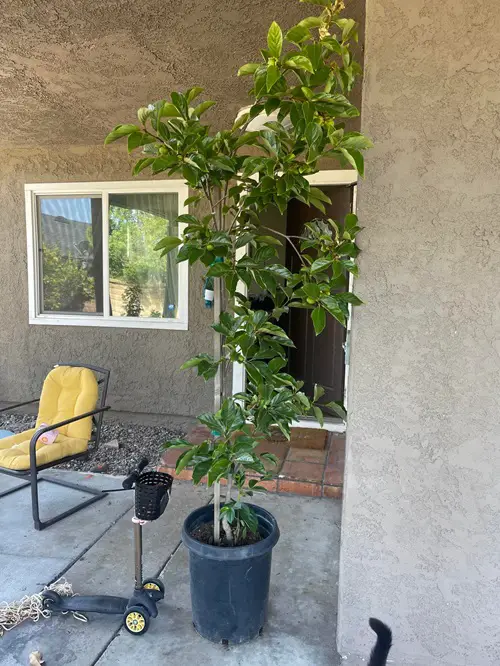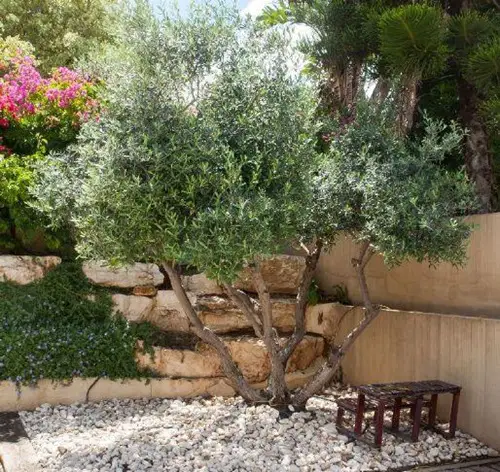Want to get delicious fruits without leaving your home? Here are the best patio fruit trees you can grow in the easy way!
Many varieties of fruit trees produce bountiful harvests even when grown on decks and balconies. Pick your favorite fruit tree for your patio from this list and get a supermarket-like yield with healthier, better taste.
Best Patio Fruit Trees
1. Persimmon
Botanical Name: Diospyros kaki
USDA Zone: 5-10
This sweet, juicy tropical fruit grows happily on warm and humid patios, making it a great pick for moderate to hot climates. If you let persimmon grow in the garden, it can reach 30-70 feet, but when grown as a potted tree, it usually grows about 8-15 feet and is easily manageable.
Persimmons thrive in full sun, moist but not waterlogged soil that is slightly acidic to neutral. Repot with fresh soil every two to three years and ensure the container has enough room for root growth.
2. Fig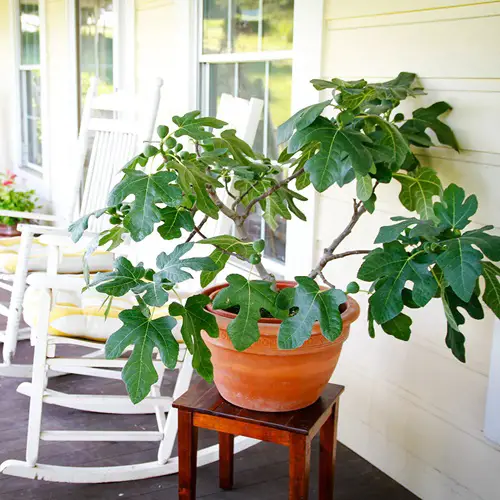
Botanical Name: Ficus carica
USDA Zone: 6-11
Native to Mediterranean climes, figs are tear-shaped, red-fleshed, sweet fruits with greenish skin and numerous crunchy seeds within. Dwarf or semi-dwarf varieties like Little Miss Figgy grow well in pots and produce fruits with little fuss, but you can grow almost any cultivar.
With showy, broad green leaves, this small, deciduous tree thrives in full sun and well-draining, loamy soil. Young fig trees need at least a 5-gallon container, but its size requirements grow as the plant grows bigger.
3. Olive
Botanical Name: Olea europaea
USDA Zone: 6-9
Next, we have the beloved olive—another Mediterranean fruit tree that grows well in pots on sunny patios. It is remarkably drought-tolerant and is perfect for busy gardeners. Place it in a spot with ample sun and water only when the surface gets too dry.
Olive trees have extensive roots, so make sure you choose a pot large enough to accommodate them. This plant thrives in well-draining, loam-based compost with a little grit in the mix. It can take at least four to five years for this plant to start bearing fruits.
4. Apple
Botanical Name: Malus
USDA Zone: 3-8
Go for a compact, dwarf, or semi-dwarf variety of apple trees, and enjoy these cool climate fruits from your own patio. The size of the apple tree is also determined by its rootstock–the base and roots of grafted fruit trees. It can take several years to start bearing fruits, but it’s worth the wait.
When you grow these in pots, be sure to prune them in late winter before you see the new growth, as that will contain their size and coax them into producing fruit in the next season.
5. Plum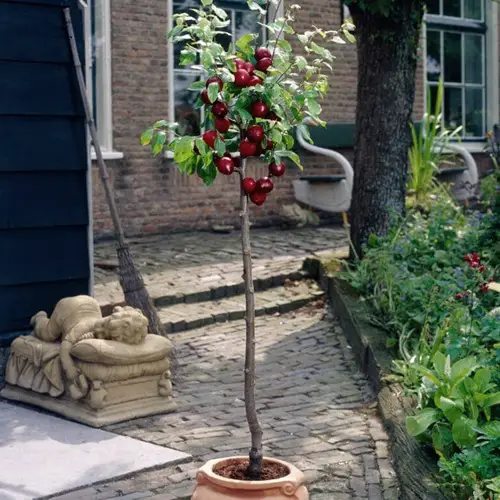
Botanical Name: Prunus Domestica
USDA Zone: 3-8
When you grow these fruit trees in containers on your patio, the potting mix can play a vital role. For the best results, give your plum trees a well-drained, moist, and fertile medium. Among the patio fruit trees that grow in pots, this one is the most adaptable and easy to care for.
If you can place more than one tree, it would be ideal, as plums rely on cross-pollination to grow.
6. Pear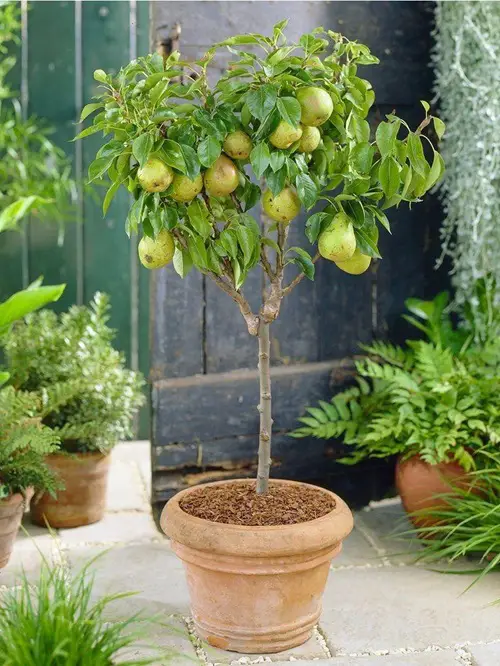
Botanical Name: Pyrus
USDA Zone: 4-9
Just like in most potted fruit trees, only a dwarf variety will ensure you get some juicy pears. Else, it will be all foliage and no fruit. Choose a pot that is at least twice as deep and wide as its rootball.
Go for a self-seeding variety, as it won’t need another tree to bear fruit. Choose a spot with at least six hours of sunlight and a well-draining potting mix.
7. Peach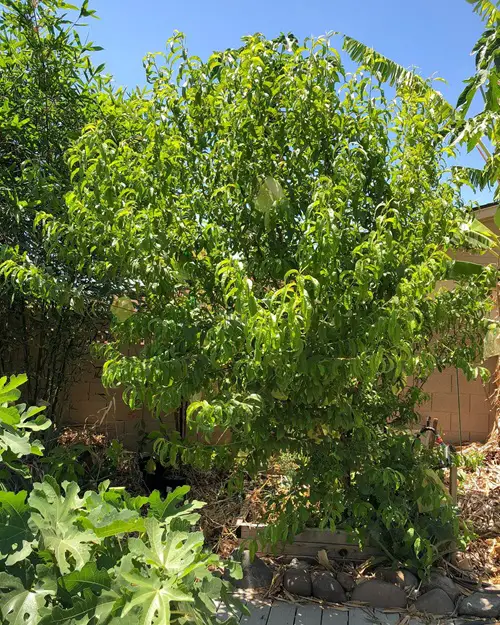
Botanical Name: Prunus persica
USDA Zone: 5-8
Certain varieties of peaches naturally occur as dwarf or compact versions, making them ideal for container gardening. Plant one on your patio in a five-gallon container with proper drainage holes. Although peaches can survive outside in winter, you should take them into a shelter to protect their roots from the cold.
For that, you might need to set the pot on a wheeled dolly which can be easily moved. Your tree will start fruiting in 2-3 years.
8. Cherry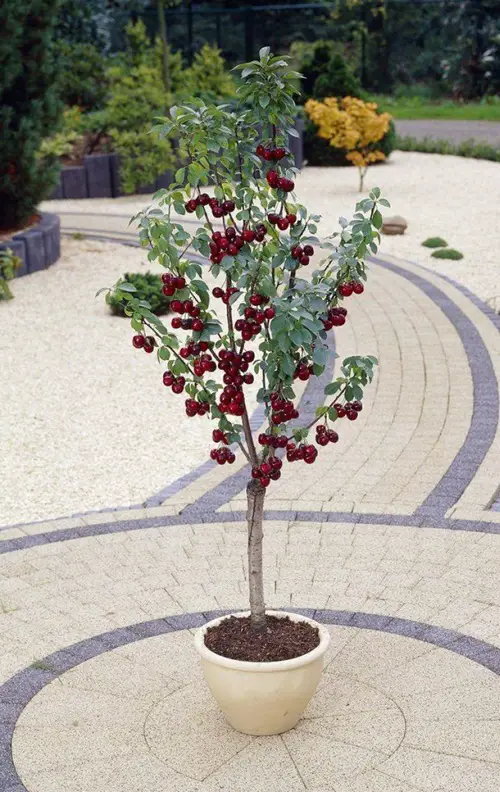
Botanical Name: Prunus avium
USDA Zone: 5-10
Cherry trees are small, easy to manage, and come with amazing blossoms that will light up your patio. In addition to eating cherries directly, you can use them as a garnish in drinks and other food items. A good soil mix will ensure that your tree thrives on your patio, so make your own with equal parts of sand peat and part perlite.
Grow them in a pot that’s at least 18-20 inches wide. Cherry trees need full sun and good air circulation to thrive.
9. Lemon
Botanical Name: Citrus limon
USDA Zone: 8-11
Lemon trees are a beautiful, compact addition to your patio and provide tangy fruits for drinks and salads. In pots, these sun-loving plants will dry out quickly. So, water them regularly.
Lemons grow best in sandy, loamy, and well-drained soil and need full sun and warmth. Here are the best lemon varieties for containers.
10. Oranges

Botanical Name: Citrus sinensis
USDA Zone: 8-11
Next on our list of best patio fruit trees are oranges. Petite varieties like Calamondin and Trovita oranges are ideal for growing in containers. You can use a whiskey barrel with drainage holes or a half barrel for growing orange fruit trees on the patio in pots.
Make a good potting mix with equal parts of peat moss, perlite, and vermiculite. Allow the top inch of the soil to dry before watering, and give your plant full sun.
11. Pomegranate
Botanical Name: Punica granatum
USDA Zone: 7-11
Pomegranates love hot, sunny spots and can grow as a bush, or be trained into a small tree. Plus, they don’t need massive containers–a 12-inch starting pot would be great to begin with. The best part is that they have glossy green leaves and will even grace your patio with orange flowers before the fruit arrives.
Try to find Flore Pleno or Madame Legrelle varieties if you can. You’ll find everything about growing it here.


